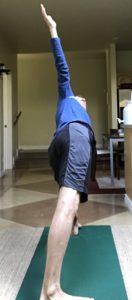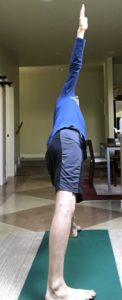Tips for Better Hydration this Fall
As we approach the fall season, especially here in California, too much dryness is a concern. Dryness increases vata dosha and an excess of vata dosha can interfere with agni and impair our ability to digest, assimilate and form new healthy tissue. If vata dosha gets too aggravated it can start to weaken the body and make us more prone to illness.
Our agni or digestive fire is what enables us to break down and assimilate the things we take in. A well functioning agni is necessary for the nutrient elements in our food to reach and become part of our tissues (for more on agni and its role in digestion, see my recent article and allergies). Good agni is also needed for the liquids we drink to reach and infuse our tissues. Therefore we should consider the role of agni both in digestion and assimiation as well as in hydration.
When vata dosha is high, dryness itself makes it harder for us to absorb liquids. Imagine a patch of very dry soil that receives rain after a long absence. The soil is so dry and hard that the rain water won’t readily absorb into the soil and simply runs off, preventing the parched soil from absorbing the much needed liquidity. A parched body can behave in a similar way. Say we feel very dry and thirsty so we drink a big glass of cold water to quench our thirst, then short time we’re urinating most of the water out. The water has simply “run off” the digestive track without much of it actually being absorbed.
We can help facilitate absorption and hydration by changing the qualities of the water we drink. The easiest way to do this is to warm the water, making it more favorable to our agni and preventing astringency in the digestive track. Think of how your skin feels when you’re exposed to very cold water. The pores close to keep the heat in. The digestive track responds similarly to cold water, whereas warm water relaxes the tissue, helping with absorption.
Another way of changing the qualities of our water is by adding other substances to the water that stimulate the agni and signal the digestive system to assimilate the liquid. The simplest way of doing this is to add lemon or lime to our water. Adding citrus to water stimulates the agni and improves absorption. Adding a tiny pinch of salt further enhances this effect and is also good for reducing vata dosha.
For a superior hydrating drink, adding even more elements to the liquid, to the point of making it more like food, is the way to go. Studies have shown milk, for example, to be more hydrating than water. In Kenya, long distance runners are known to drink plenty of rooibos tea with milk after a long run for rehydration. I recommend making any type of herbal tea that you enjoy and adding a small amount of sweetener such as maple syrup or agave nectar. If milk will complement the tea, as in the case of rooibos tea, then a small amount of cow’s milk or even soy or almond milk will add sufficient sweetness and substance to the liquid for optimal hydration.
Caffinated drinks, while often just as hydrating as water in the short term, can aggravate vata dosha longer term if taken in excess and are therefore not ideal for hydrating. Alcoholic drinks dramtically increase heat in the body. So while a G&T can feel refreshing in the short term, it tends to dry us out later as the heat of the alcohol “steams” away the moisture in the body.
Finally, eating foods with a higher moisture content and reducing our intake of dry, very salty foods can be helpful. As we move further into the fall and the weather cools it makes sense to eat more soups and stews and fewer dry sautéed or roasted dishes. It’s also helpful to sip warm water or herbal tea with our meals, deliberately mixing the warm liquid with bites of food as we liquify the food in our mouths. In this way we can offset the effects of dryer foods and infuse more liquid into any meal and ultimately into our tissues.


